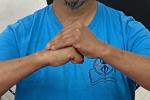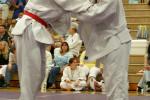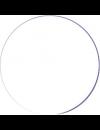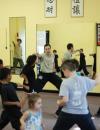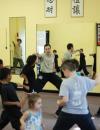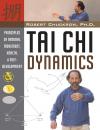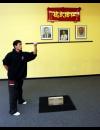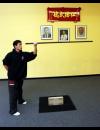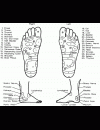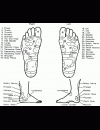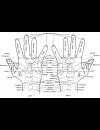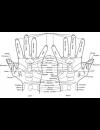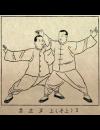A Closer Look at Single-Handed Swords
June 24, 2024
The sword is just a tool, a means to accomplish a goal. In the end, victory is determined as much by the skills of the swordsmen as the types of swords they wield or armor they wear. 12 Min Read
Meet the Author! Joe Varady discusses sword-fighting, H.E.M.A and lightsabers with Gene Ching
June 19, 2024
The Importance of Belonging to the Wulin
June 17, 2024
YMAA Staff writer Gene Ching ruminates on the society and culture of martial artists known as the wǔlín. 6 Min Read
Kuzushi: This Judo Stuff Works!
June 10, 2024
Kuzushi works both in throwing and ground techniques. It’s based on sound mechanical principles as well as the forces of gravity. 8 Min Read
Tai Chi and Qigong for Arthritis and Pain
June 3, 2024
Hypoxia, which is an oxygen deficiency in the tissues, underlies or complicates almost every health condition. This is the reason I have proposed the term Metarobic exercise to describe the effects of Tai Chi and related exercises on the body. 9 Min Read
Wuji - The State of Emptiness
-
July 30, 2008
Wuji (無極) is a state of emptiness or simply a single point in space. There is no discrimination and there are no polarities (or poles). According to Yi Jing (i.e., Book of Change), originally the universe was in a Wuji state.
Wuji - The State of Emptiness
-
July 30, 2008
Wuji (無極) is a state of emptiness or simply a single point in space. There is no discrimination and there are no polarities (or poles). According to Yi Jing (i.e., Book of Change), originally the universe was in a Wuji state.
The Meaning of Taiji
-
July 18, 2008
Taijiquan (Tai Chi Chuan) is an internal style of martial arts that was created in the Daoist monastery of the Wudang mountain, Hubei Province.
Teaching Kids Can be Child’s Play
-
July 3, 2008
Any successful martial arts school can be enhanced through the development of a children’s program.
Teaching Kids Can be Child’s Play
-
July 3, 2008
Any successful martial arts school can be enhanced through the development of a children’s program.
Tai Chi Dynamics
-
June 25, 2008
Originally formulated in Old Chinese, the Taijiquan Classics are very compact and poetic and can be quite mysterious when translated into Modern Chinese and then into English.
Meditations on Violence
-
May 22, 2008
People are weird. They have an almost infinite ability to learn and communicate. At the same time, this amazing ability is used as much for fantasy and entertainment as it is for information and survival. Take, for example, the rhinoceros and the unicorn.
Martial Arts Conditioning and Fighting - Part 2
-
May 14, 2008
Traditional martial arts is not supposed to be glamorous, and conditioning is not a very glamorous process, being a very repetitive and monotonous type of exercise requiring many years of training.
Martial Arts Conditioning and Fighting - Part 2
-
May 14, 2008
Traditional martial arts is not supposed to be glamorous, and conditioning is not a very glamorous process, being a very repetitive and monotonous type of exercise requiring many years of training.
Martial Arts Conditioning and Fighting - Part 1
-
May 9, 2008
Through many years of history, experience, and practice, martial artists realized that in a fight, there are generally three factors that determine victory.
Martial Arts Conditioning and Fighting - Part 1
-
May 9, 2008
Through many years of history, experience, and practice, martial artists realized that in a fight, there are generally three factors that determine victory.
Self Qigong Massage, part 2
-
April 30, 2008
Although many of the purposes of self-massage are obvious, from the view of Qigong, its functions are wider and more profound. Let's review these purposes so you have a clearer understanding of the "why" of this practice.
Self Qigong Massage, part 2
-
April 30, 2008
Although many of the purposes of self-massage are obvious, from the view of Qigong, its functions are wider and more profound. Let's review these purposes so you have a clearer understanding of the "why" of this practice.
Self Qigong Massage, part 1
-
April 13, 2008
Self-massage is a natural human instinct to soothe the mind/spirit and ease discomfort in the body. There are many examples of this. If you accidentally get hit with a hard object, you naturally rub the hurt place to lessen the pain and also to keep a bruise from forming.
Self Qigong Massage, part 1
-
April 13, 2008
Self-massage is a natural human instinct to soothe the mind/spirit and ease discomfort in the body. There are many examples of this. If you accidentally get hit with a hard object, you naturally rub the hurt place to lessen the pain and also to keep a bruise from forming.
How to Avoid Common Injuries in Your Martial Arts Training
-
April 1, 2008
Injuries to the hands are common in the martial arts. This occurs because almost all martial artists condition their hands to increase their power and destructive potential.
Generating Martial Power (Jin)
-
March 19, 2008
Jin, or Martial Power, can generally be divided into three categories: Hard Jin, Soft-Hard Jin and Soft Jin. Among these, Hard Jin uses the most muscular power, followed by Soft-Hard Jin and finally Soft Jin.
Generating Martial Power (Jin)
-
March 19, 2008
Jin, or Martial Power, can generally be divided into three categories: Hard Jin, Soft-Hard Jin and Soft Jin. Among these, Hard Jin uses the most muscular power, followed by Soft-Hard Jin and finally Soft Jin.
A Brief History of the Chinese Martial Arts
-
March 7, 2008
The beginning of Chinese martial arts probably started long before history was recorded. Martial techniques were discovered or created during the long epoch of continuous conflict between humanity and animals, or between different tribes of humans themselves.
A Brief History of Qigong
-
February 28, 2008
It is known that the Chinese art of Qigong has a history that goes back over 5,000 years, though only a few historical documents exist today. Qigong can be roughly divided into four periods.


